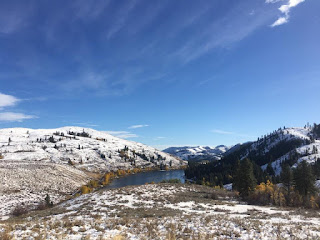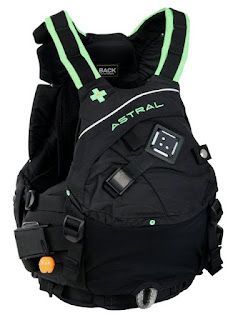Kayak Guide Notes
As a kayak guide I get to use lots of different gear and refine what works best for me. You also learn small tweaks to your equipment by paddling with other kayakers, guides, and by taking formal training classes. I have decided to make a quick list of products that I use while I am working. I hope by adding this information new paddlers might be inspired to not only get safety equipment but take classes to ensure proper use.

Guiding in the San Juan Islands in Washington State you have to be prepared for the cold water. The average water temperature is 48F. This is pretty cold and hypothermia is an extreme concern. So I use a Kokatat Dry Suit. It is a gortex suit that has latex gaskets at the neck and wrist. The suits are pretty tough and keep you pretty much dry if you have to enter the water. With proper base layers, it provides you some time to perform a self-rescue. Dry Suits are so important, in my view, to open new paddlers up for learning in cold water. You no longer have to be wet all day when you capsize while practicing.

Personal Flotation Device (PFD) are necessary. As a guide we do not like to call them life jackets since they will not save your life. They simply keep you floating so your guide can save your life. I have been using the same PFD for the past couple of years and I have been pretty happy with it. My personal PFD is the BRIK by Stohlquist. I find it to fit snug and comfortable against the body and leaves plenty of room for rotation and movement. There is not a lot of pocketing on the jacket but that is what I look for. With less bulk with stuff in pockets, it is easier to do some rescues. It has been a very durable jacket and seems to have plenty of life left in it. I am going to retire it soon as I am going to test out a new vest made by Astral called the Green Jacket. I think it is still waiting for Coast Guard approval.
Neoprene Spraydecks are my favorite to use and I have mostly used decks made by Snap Dragon. I am currently using a Seal Spraydeck because I like the fit on the combing of the cockpit. But I have found that the Seal decks do not seem to be as durable as the Snap Dragon decks. Neoprene is my choice because it has a tight fit and resists imploding when going through waves. There are many styles and companies that make spraydecks. Find one that you are comfortable with.
In the guiding world, we have to have a tow belt. Mainly used for major issues and rescues. It's rescue equipment, so do not expect your guide to hook a tow because you are tired. The one I use is made by NorthWater. It is the Sea Tec Tow Line and has all the features I look for in a belt. It is packed in a tubular shape making it unobtrusive while kayaking. Once hooked for tow and rope is deployed it has a strong webbing belt that feels secure around the waist. The belt is outfitted with a quick release in case of emergency and you need to get free of the tow. The rope can be stowed quickly due to the easy to pack square pouch that has a Velcro closure, so you do not have to roll it back up and it is secure. I like to daisy chain my rope so that I can start with a short tow and if need due to conditions or length of tow I can relase the daisy chain for a long tow.
As a guide, I carry lots of other safety equipment which includes flares, stove, spare clothing, food, compass, shelter, first aid kit, repair kit, VHF radio, and water. Seem my review of the ICOM M72 for my personal VHF. Plus I always have a spare paddle along with my primary use paddle. I will provide more detailed information on the paddle I prefer to use soon.





Comments